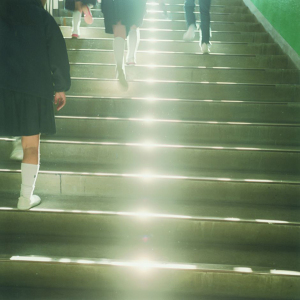ART-TRIBUTE: Japanorama-New vision on art since 1970, Part II
 In many ways, Japan is a highly unusual country, in which tradition and cutting-edge technology coexist, in which the relationship between man and nature is considered paramount, Japan has been able to balance individual and collective demands. Japan was among the first countries in Asia to modernise at the end of the nineteenth century, writing its own history by escaping the cultural colonisation of the West, even retaining its language (Part I)
In many ways, Japan is a highly unusual country, in which tradition and cutting-edge technology coexist, in which the relationship between man and nature is considered paramount, Japan has been able to balance individual and collective demands. Japan was among the first countries in Asia to modernise at the end of the nineteenth century, writing its own history by escaping the cultural colonisation of the West, even retaining its language (Part I)
By Dimitris Lempesis
Photo: Centre Pompidou-Metz Archive
The exhibition “Japanorama – New vision on art since 1970” brings together visual arts, architecture, design, fashion and a flood of subcultures including illustration, manga and animation. Rather than organizing the exhibition chronologically, it has been organised into different thematic sections, modelled on an archipelago. Each of the “islands” making up this archipelago represents a key word in the exhibition: “Strange object / post-human body”, “Pop”, “Collaboration / Participation / Sharing”, “Politics and poetics of resistance”, “Subjectivity”, “Materiality and Minimalism”, six themes to characterize contemporary Japanese visual culture. These key concepts stem from the most iconic creations in Japanese art from the 1970s to the present day, and are to be understood in the relationship between aesthetic sensibility and materiality, politics, economics, societal facts or even information. Section A- Strange Object – Post-human Body: The main island serves as an introduction and is focused on the body: the question of sensibility and the relationship between the body and the external world. How is the body perceived in Japan? Posthuman artworks, in connection with technology, also appear in this section which opens the exhibition and brings together some of the most spectacular and unusual art forms. Section B-Pop: The notion of pop art and pop culture in Japan highlights the relationship between art, consumption and subcultures This large section shows thediversity and complexity, beyond appearances, of Japanese pop art, engendered by a very rich pop culture, going from commercial advertising in the 1980s to underground culture, to the “neopop” 1990s that made clever use of the language of manga, animation and other elements of Japanese subcultures. Section C-Collaboration / Participation / Sharing: This section focuses on relationships within society. It focuses on projects that explore relationships with others through participatory and collaborative approaches, characterized by maintaining the individualised self, but one whose contours must be flexible in order to emphasize harmony and interpersonal relations. Particular attention is paid to the unusual renewal of solidarity following the disaster of the Tohoku earthquake on 11/3/2011. Section D-Policies and Poetics of Resistance: This island looks at the idiosyncratic part that ideas of resistance and criticism play in art in Japan. One example of these policies of resistance can be found in the poetic form of expression “kawaii”, which may seem innocent and naïve, but which has an underlying message of resistance. Rather than producing direct references to political or social problems, “kawaii” art creates allegory through the imagination and fantasy. Section E-Subjectivity: This island deals with subjectivity, from a personal point of view using a documentary approach. Observing and judging the world from a personal point of view is a practice widely used by artists, producing highly expressive art. This section focuses on an approach often documentary in nature, in which the narrative occupies a special place. Photographs, films and videos, in particular, are presented. Section F-Materiality and Minimalism: The relationship to matter and minimalism are deeply linked to the idea of space developed in Japan, especially in architecture, in line with ways of thinking such as Zen. This section attempts to show the direct relationship that some Japanese artists have in their perception of things; it brings together non-anthropocentric approaches, which eliminate the emotional contact of the artist so as to leave the object or the matter responsible for the narrative, a reductionism expressed by the concept of “less is more”, nothingness filled with meaning.
Info: Curator: Yuko Hasegawa, Centre Pompidou-Metz, 1 parvis des Droits-de-l’Homme, Metz, Duration: 20/10/17-5/3/18, Days & Hours: Mon & Wed-Sun 10:00-18:00, www.centrepompidou-metz.fr
















